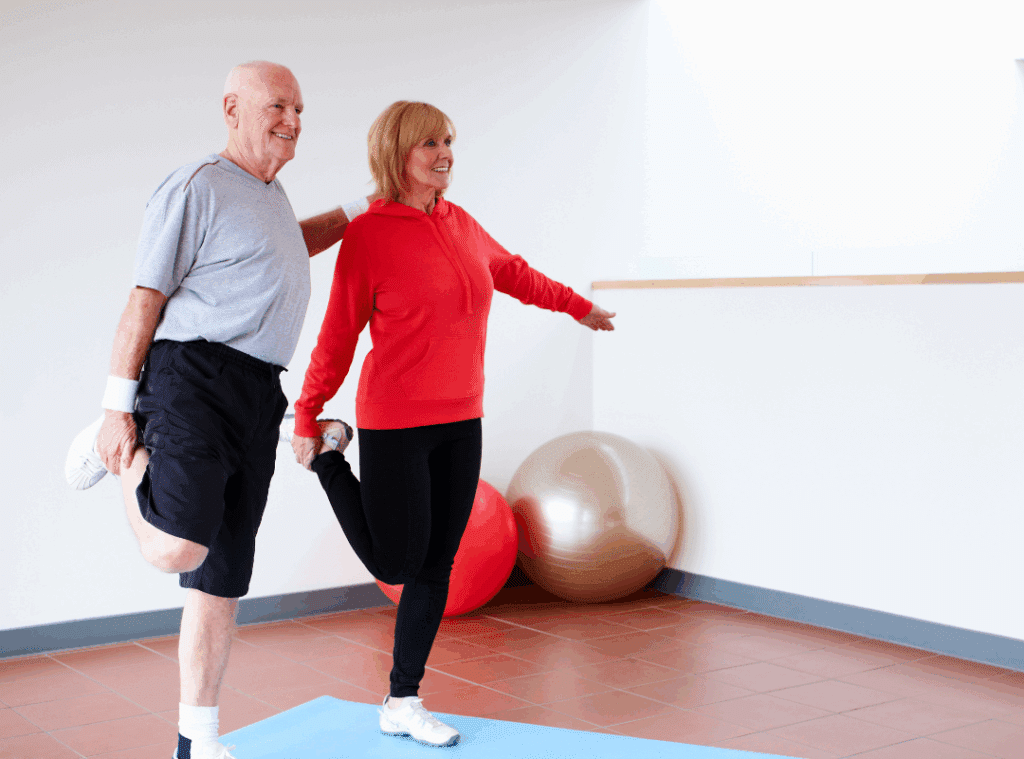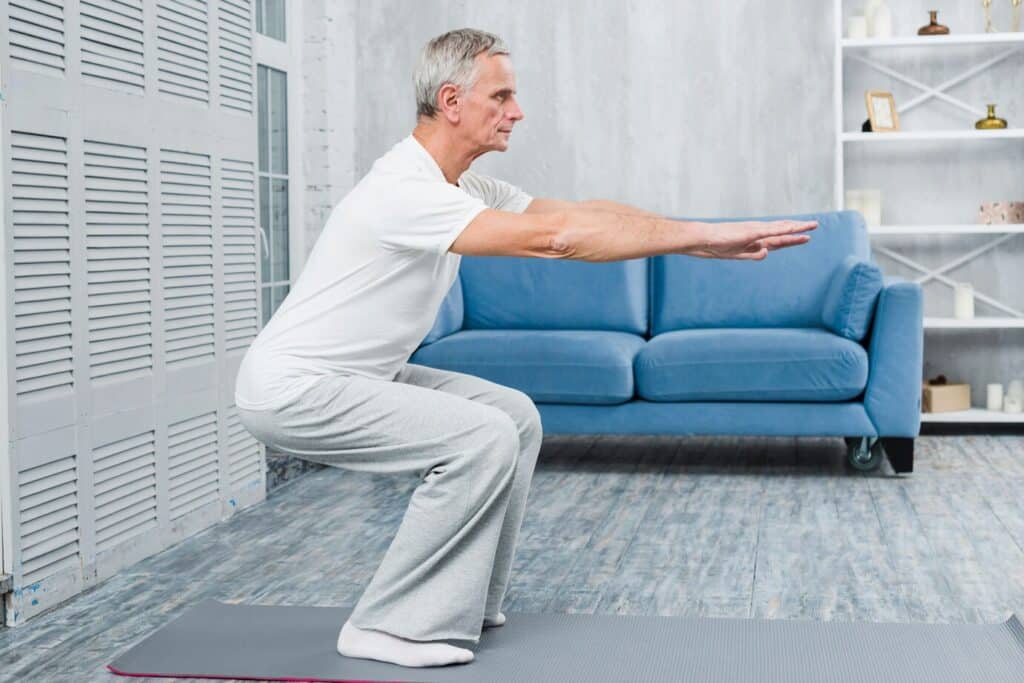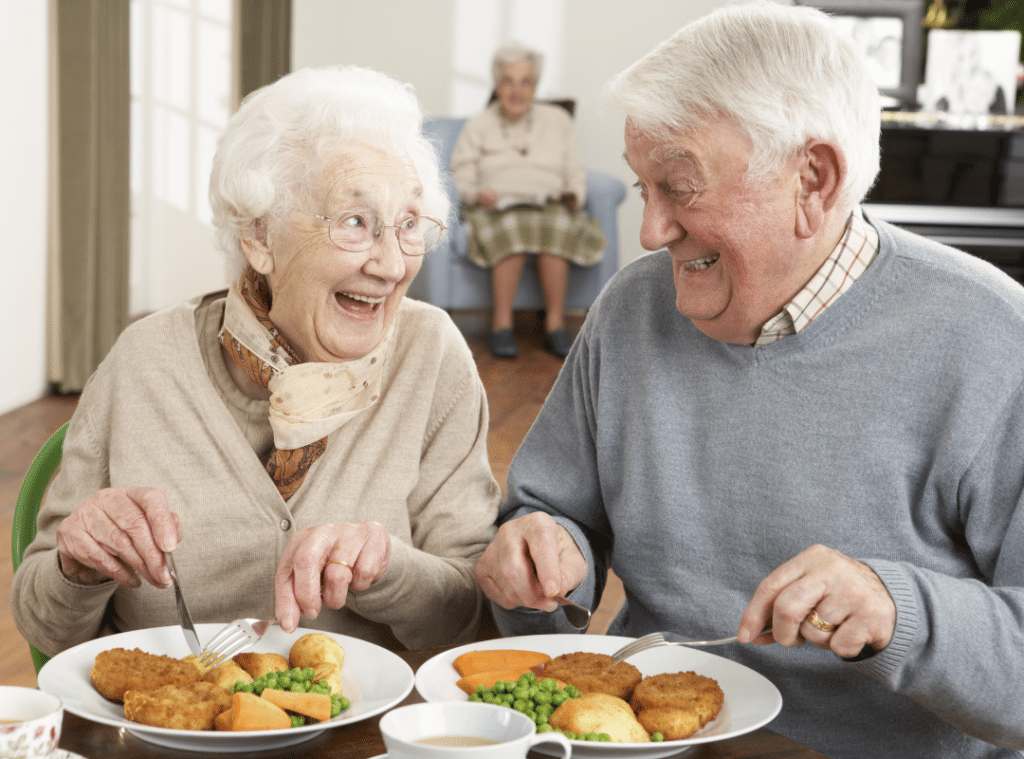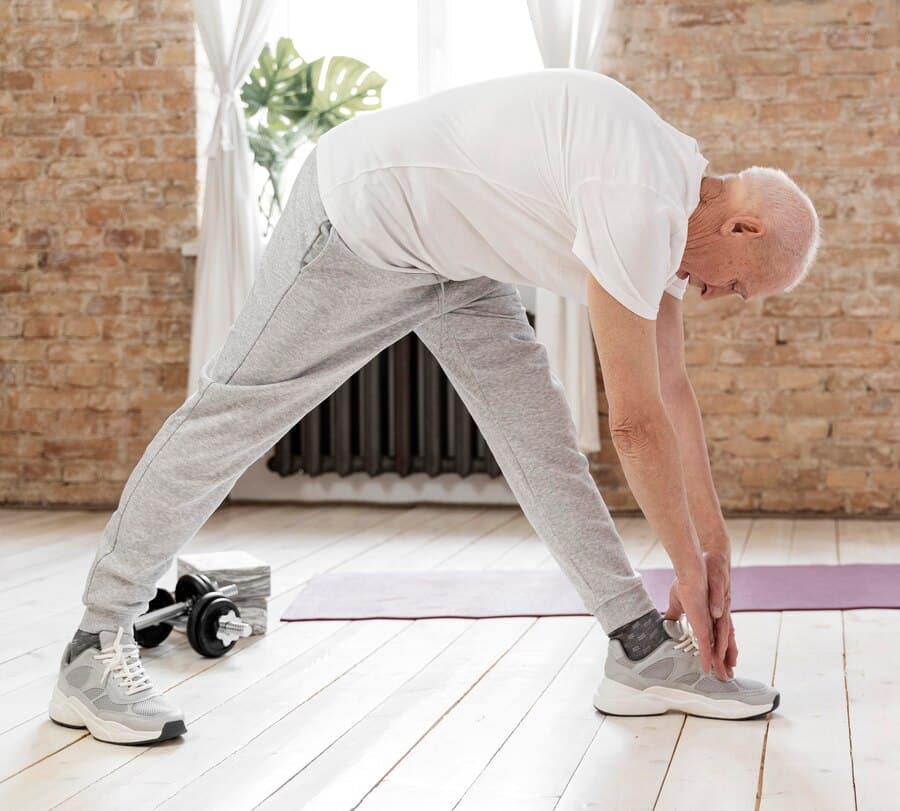Elderly Leg Exercises to Strengthen Mobility at Home
Maintaining mobility and independence is a top priority for older adults, and elderly leg exercises are one of the most effective ways to achieve it. These targeted workouts can dramatically improve balance, stability, and strength, all while reducing the risk of falls. Whether you’re just starting or looking to enhance your current routine, incorporating the right leg exercises can make a lasting impact on your physical health.
At Westmont at San Miguel Ranch, we believe in empowering seniors to live vibrant, active lives. From gentle movements to more structured routines, our wellness programs emphasize elderly leg exercises at home and in community settings. Whether you’re sitting, lying in bed, or standing, there’s an exercise suited for your ability level. Let’s explore the most effective ways to maintain strong legs and safe mobility as you age.
Why Leg Strengthening Is Essential for Seniors
Leg strength plays a pivotal role in everyday activities such as walking, standing, getting out of bed, or climbing stairs. As we grow older, muscle loss (sarcopenia) becomes more prevalent, which can increase the risk of injuries and reduce independence. That’s why focusing on leg strengthening exercises for seniors while sitting or even lying down is crucial for maintaining autonomy.
These workouts don’t just improve mobility—they also help prevent dangerous falls, one of the most common causes of injury among the elderly. Incorporating squats with chair support or elderly leg exercises no equipment required can provide long-term health benefits with minimal setup.
Core Elderly Leg Exercises You Can Start Today
You don’t need expensive gym equipment or personal trainers to start building strength. These simple, low-impact movements offer a great starting point for seniors at various fitness levels:
1. Sit to Stand
An essential part of elderly leg exercises for seniors, this movement mimics one of the most frequent daily motions. Practice standing up from a sturdy chair and sitting back down with control. It helps with thigh and hip strength.
2. Calf Raises
Stand behind a chair for balance, and lift your heels to stand on your toes. This improves ankle stability and enhances walking performance. You can also perform these as leg strengthening exercises for seniors while sitting by lifting toes or heels alternately.
3. Knee Extensions
While sitting, slowly extend one leg until it’s straight. Hold briefly, then lower. This simple exercise is effective for strengthening the quadriceps and is ideal for elderly leg exercises at home.
4. Hip Abductions
Stand with a chair nearby for support. Lift one leg sideways and return. This movement promotes hip strength and balance, key components of any leg strengthening exercises for seniors in bed or upright.
For a comprehensive approach, consider integrating tailored senior fitness programs that include these moves and more.
Modifying and Progressing Your Routine
As you gain strength, gradually increase the intensity of your leg workouts. Start with 5-10 repetitions and progress by adding light resistance, more repetitions, or standing versions of seated exercises.
For those starting in bed, leg strengthening exercises for seniors in bed like ankle pumps or lying leg lifts are excellent. As endurance builds, transition into elderly leg exercises for seniors done while standing or sitting with added resistance, such as resistance bands or light ankle weights.
If an exercise feels too difficult, revert to a more comfortable version. Safety and comfort should always guide your routine. Enhance your progress by exploring physical therapy benefits for seniors.
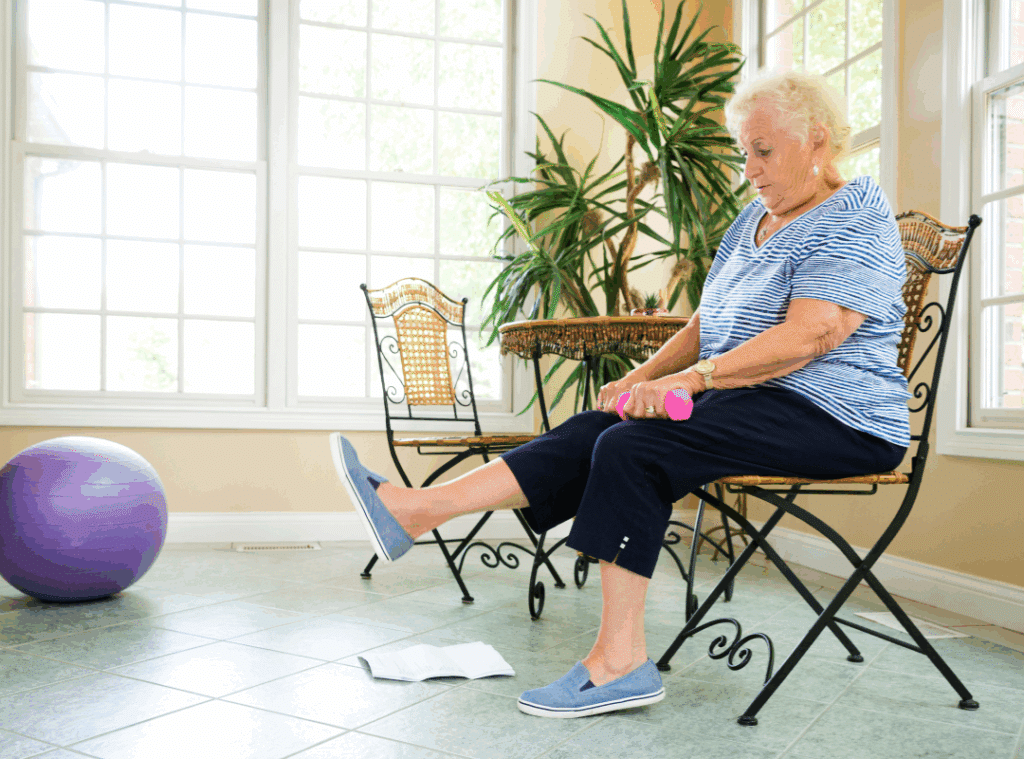
Benefits of Elderly Leg Exercises
The health benefits of regular elderly leg exercises are profound and wide-reaching:
- Improved Balance: Leg workouts strengthen stabilizing muscles and improve reflexes, which reduces fall risk.
- Enhanced Mobility: Stronger legs mean better walking, stair-climbing, and transitioning from sitting to standing.
- Better Joint Support: Movements like knee extensions promote healthy joints and can reduce pain from arthritis.
- Boosted Confidence: Seniors who feel strong in their legs are more likely to stay active and engaged socially.
Consistent routines using elderly leg exercises, no equipment, can create meaningful improvements. You can also try essential senior fitness routines to keep your plan varied and engaging.
Safe Practices While Exercising
Safety is just as important as the exercises themselves. Here are a few ways to ensure you’re staying safe:
- Warm Up First: Always begin with light movements like ankle rolls or leg swings to warm the muscles.
- Use Support When Needed: Whether it’s a chair, wall, or railing, supports can prevent slips or missteps.
- Wear Proper Shoes: Supportive, non-slip footwear is a must for balance and protection.
- Monitor Your Body: If you feel pain, dizziness, or discomfort, stop the activity immediately and consult a healthcare provider.
Eliminating environmental hazards and addressing any instability in older adults can greatly enhance your safety and success during workouts.
Resources for Home Leg Workouts
For those seeking inspiration beyond our community, here are a few reputable resources that offer free programs and visual guides:
- NIA Exercise & Physical Activity Guide – Trusted advice from the National Institute on Aging.
- SilverSneakers Exercises – Popular video classes specifically designed for seniors.
- Go4Life Workout Videos – Easy-to-follow leg and balance routines at home.
These resources support your journey with elderly leg exercises at home that match your level of mobility and fitness goals.
Keep Moving Toward Independence
Incorporating consistent elderly leg exercises into your weekly routine is a proven way to boost physical and emotional health. Whether you prefer leg strengthening exercises for seniors in bed, sitting routines, or standing movements with no equipment, staying active is within your reach.
At Westmont at San Miguel Ranch, we’re here to support every step of that journey. Our wellness programming is designed to promote balance, independence, and mobility through personalized attention and fitness support.
To learn more about how we can help, please call us at 619-271-4385 or schedule a visit to experience our community firsthand.
How Do The Costs Of Moving Into A Quality Senior Care Community Compare With The Costs Of Staying At Home?Compare The Costs of Senior Living vs Staying at Home
Frequently Asked Questions
What is the best exercise for seniors to strengthen their legs?
The best exercise for seniors to strengthen their legs is seated leg raises or chair squats. These exercises help build muscle without putting too much strain on the joints. Resistance band leg presses and standing calf raises are also effective and easy to perform at home. Always begin with low intensity and gradually increase as strength improves.
What causes weakness in the legs in the elderly?
Leg weakness in the elderly is often caused by age-related muscle loss (sarcopenia), poor circulation, or inactivity. Other factors like arthritis, neurological conditions, and vitamin deficiencies can also contribute. In some cases, medications or chronic diseases such as diabetes play a role. A proper diagnosis from a healthcare provider is essential for targeted treatment.
Does walking help weak legs?
Yes, walking is a great low-impact exercise that can improve leg strength and endurance over time. It increases blood flow, boosts mobility, and helps maintain balance. For seniors with very weak legs, it’s best to start with short walks and use support if needed. Consistent walking combined with stretching and strength training yields the best results.
What is the best exercise for weak leg muscles?
For weak leg muscles, seated leg extensions, heel slides, and resistance band workouts are excellent options. These exercises focus on rebuilding strength without overexertion. Water aerobics is another gentle yet effective way to exercise weak legs. It’s important to consult a physical therapist to create a plan tailored to individual needs.



